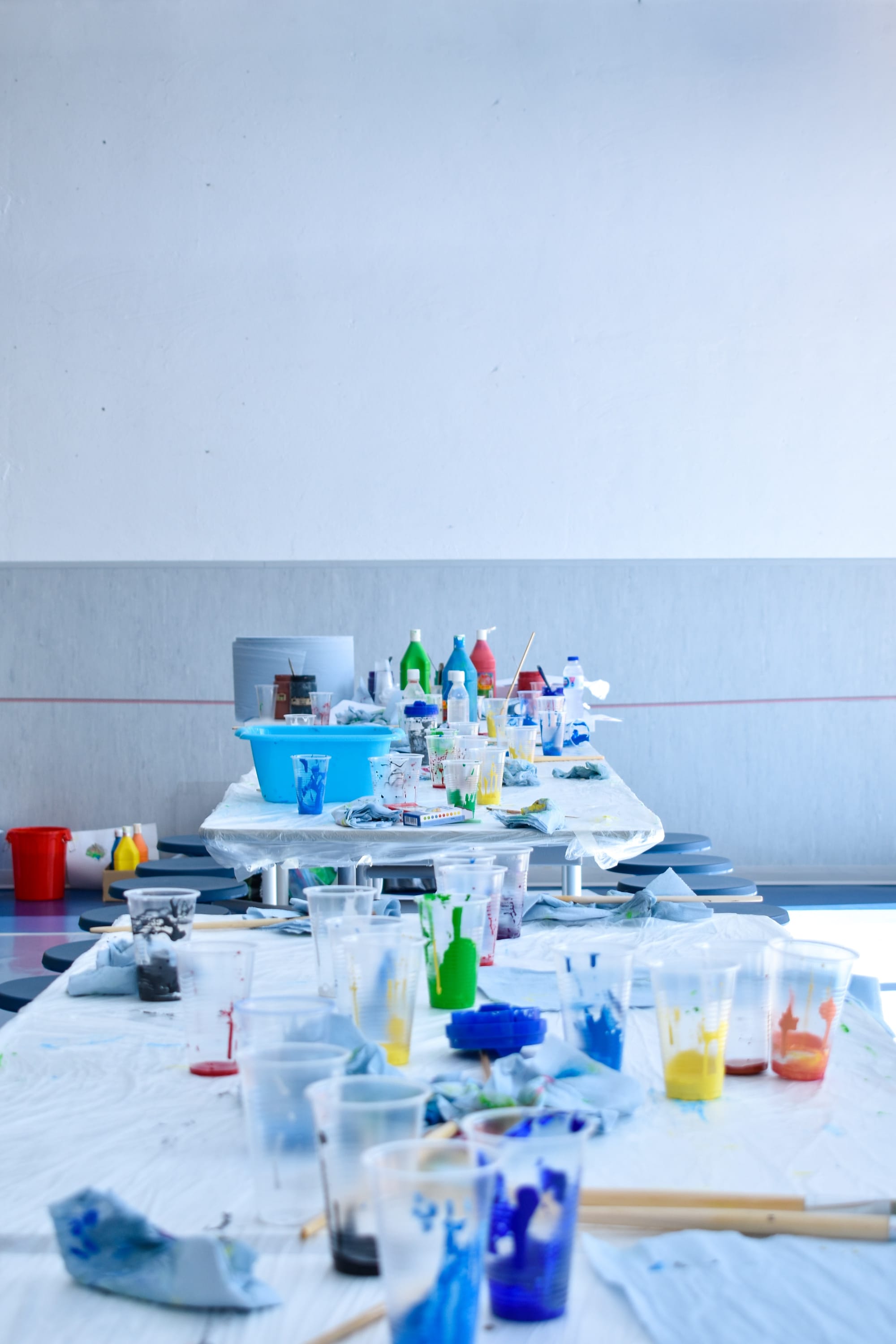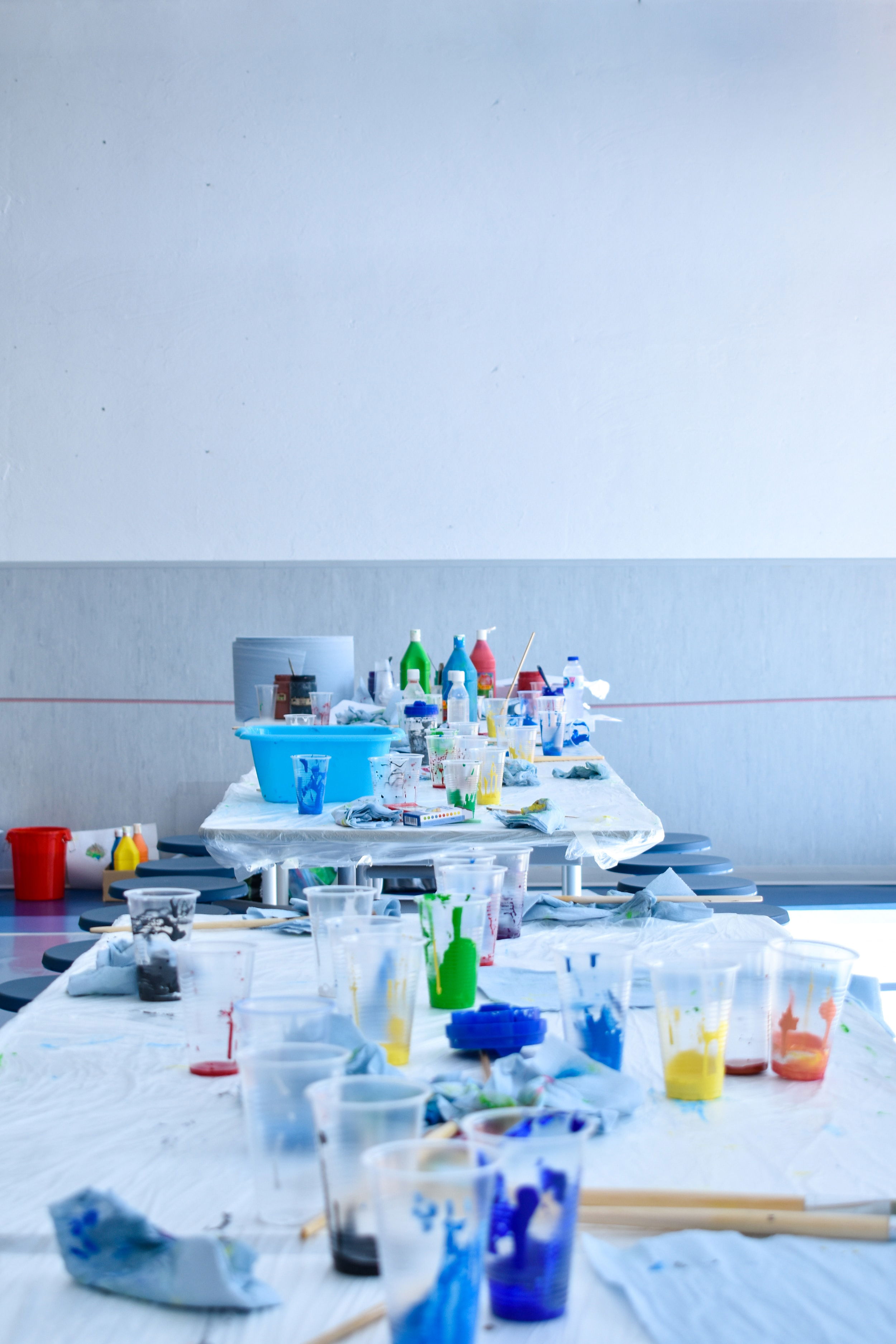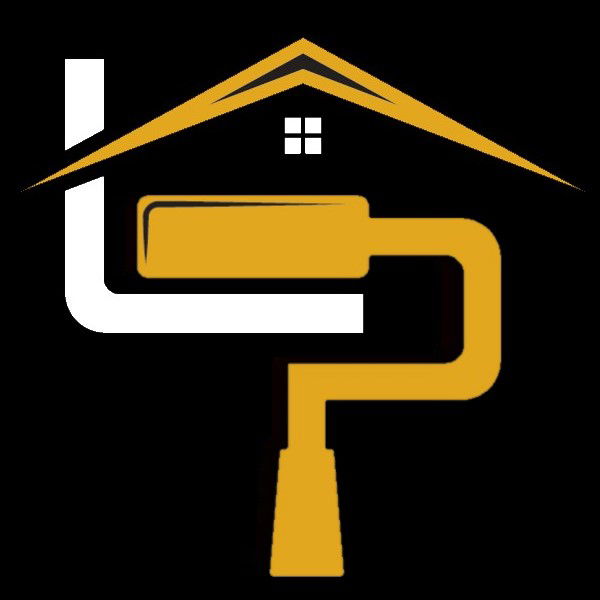A Guide for Professionals: Creating the Perfect Painting Workspace

Workspace Efficiency and Safety!
Hey there, creative spirits and painting professionals! On Lightmen Daily, we're passionate about transforming blank canvases into breathtaking masterpieces, and today we're zooming in on a critical aspect of painting - the workspace. An organized, safe workspace is the cornerstone of professional painting. So, gear up as we walk you through setting up and maintaining your ideal painting workspace. Don't forget to subscribe and hit the bell for all our latest painting tips and tricks!
"A well-organized painting workspace is like a well-tuned orchestra. Each instrument, or in our case, each tool and material, has its place and role. The harmony created in such an environment is not just about convenience; it's about creating a symphony of creativity and efficiency. I recall the chaotic melody of my first disorganized studio, where finding a paintbrush was like searching for a violin in a percussion section. The moment I orchestrated order, my work transformed, resonating with the rhythm of efficiency and artistry."
Workspace Setup for Productivity in Painting Projects
Creating an efficient workspace is crucial for achieving productivity and excellence in any painting project. An optimally organized workspace not only boosts efficiency but also enhances safety and the overall quality of work. In this section, we'll explore how strategic planning and organization can transform a painting workspace, ensuring every tool and material is perfectly placed for maximum efficiency.
Choreographing Your Workflow
- Organized Tool Placement: The key to an efficient painting workspace is organized tool placement. Brushes, rollers, paints, and trays should be arranged methodically within easy reach. This setup minimizes time spent searching for tools and materials, allowing for a smoother, more focused workflow. For instance, keeping brushes and rollers on a nearby table or shelf, and arranging paints and trays in the order they will be used, can significantly speed up the process.
- Strategic Setup for Efficiency: Consider the overall flow of the painting project. Start by strategically placing drop cloths to protect the flooring and furniture. Next, organize paint cans and equipment in a way that follows the sequence of the job. For example, if you’re painting a room from top to bottom, have your ceiling paint and tools closest to the workspace first, followed by wall paints and tools. This minimizes unnecessary movement and saves time and energy, allowing for a more streamlined and efficient painting process.
Prioritizing Safety and Cleanliness
- Maintaining a Safe Workspace: Safety is paramount in any painting project. An orderly and clean workspace not only makes the job more efficient but also minimizes the risk of accidents. Ensuring that walkways are clear of obstacles, cords are securely taped down, and spills are cleaned up promptly are essential practices for maintaining safety.
- Cleanliness as a Safety Measure: Regularly cleaning the workspace throughout the project is crucial. This includes properly disposing of used materials, wiping down surfaces to remove dust and paint splatters, and keeping tools clean and organized. A clean workspace not only prevents accidents but also ensures the highest quality finish, free from debris and imperfections.
Setting up a workspace for maximum productivity in painting projects is about more than just organization; it’s about creating an environment that promotes efficiency, safety, and quality. By choreographing your workflow with organized tool placement and strategic setup, and prioritizing safety and cleanliness, you set the stage for a successful painting project. At Lightmen Painting, we understand the importance of an optimally organized workspace and invite you to experience the difference it can make in your next project. Whether you’re a DIY enthusiast or a professional painter, these tips will help you create a productive, safe, and efficient painting environment.
Safety in Details: Essential Practices for Painting Projects
When it comes to painting, whether it's a DIY project or a professional job, safety is in the details. Paying attention to the little things can significantly reduce the risk of accidents and ensure a smooth painting process. This section highlights key safety practices that are essential in any painting project, emphasizing the importance of spill protection, hazard avoidance, and tool storage.
Spill Protection: Safeguarding Surfaces
- Floor and Furniture Covers: Using protective covers for floors and furniture is a critical step in any painting project. It's not just about keeping these surfaces free from paint spills and splatters; it's also about creating a safer workspace. Slippery floors due to paint spills can lead to accidents, so ensuring adequate coverage is a necessary safety measure.
Avoiding Hazards: A Proactive Approach
- Cord Management: Keep all cords from paint sprayers, lights, or other equipment securely taped down or out of the way. This reduces the risk of tripping, which is especially important in cluttered or confined spaces.
- Adequate Lighting: Good lighting is essential not just for precision in painting but also for safety. Ensure that your workspace is well-lit to avoid mishaps and to ensure the highest quality of work. Proper lighting can highlight wet paint areas, drips, or spills that might otherwise be overlooked.
Tool Storage: Organized and Safe
- Proper Storage Practices: Storing brushes, rollers, ladders, and scaffolding properly is crucial for safety and efficiency. Proper storage prevents damage to tools and equipment and keeps the workspace organized, reducing the risk of accidents. This isn’t just about tidiness; it’s a fundamental safety practice that also helps in maintaining a professional and efficient work environment.
Equipment Maintenance: Extending Tool Life
Your painting tools and equipment are invaluable assets in achieving the perfect finish. Proper maintenance of these tools is essential not only for their longevity but also for maintaining the quality of your work.
- Regular Cleaning and Inspection: Regular cleaning and inspection of brushes, rollers, and sprayers can prevent paint buildup, which can affect the quality of your paint job. For equipment like ladders and scaffolding, routine checks for any damage or wear are crucial for ensuring safe usage.
- Storage and Care: Store your painting tools in a dry, safe place to prevent rusting or deterioration. Proper care, such as cleaning brushes thoroughly after use and storing them properly, extends their life and ensures they are ready for your next project.
Safety and equipment maintenance are integral to successful painting projects. By focusing on these details, you ensure a safer, more efficient, and high-quality outcome. At Lightmen Painting, we prioritize these practices, understanding that they are key to delivering superior results while ensuring the safety of everyone involved. Embrace these tips to enhance your painting process, and remember, in painting, safety and precision go hand in hand.
"Why did the painter keep a messy workspace? Because he thought it would add more 'character' to his art! But trust me, organizing your workspace is like trying to get my cat to stop chasing my paintbrush – it's a never-ending battle, but absolutely worth it. I remember once I spent more time looking for my favorite brush than actually painting. I told myself, 'If only my paints were as easy to find as my cat’s hairballs!' Moral of the story: A tidy space equals more time for masterpieces (and less time playing hide and seek with your supplies)!"
Regular Tool Care in Painting Projects
For professional painters and DIY enthusiasts alike, regular tool care is a fundamental aspect of achieving a flawless finish in any painting project. Proper maintenance of your painting tools not only ensures their longevity but also significantly enhances the quality of your work. Let's dive into the essential practices for maintaining brushes, rollers, and other equipment.
Brush and Roller Maintenance
- Avoiding Paint Buildup: Regular cleaning of brushes and rollers is essential to prevent paint buildup, which can lead to uneven and unsatisfactory application. Clean your tools after each use with the appropriate solvents and store them properly to maintain their shape and functionality.
- Ensuring Smooth Application: Properly maintained brushes and rollers guarantee a smooth, flawless finish. Over time, paint residue can harden bristles and rollers, affecting their ability to evenly distribute paint. By keeping them clean, you'll ensure each stroke and roll is as effective as the first.
Equipment Checks for Consistency and Safety
- Inspecting Sprayers: Regular checks of paint sprayers are crucial to ensure consistency in paint application. Look for any clogs or wear and tear that might affect the sprayer's performance.
- Ladder Safety: Ladders are an essential tool for many painting projects. Regularly inspect them for stability and wear. A stable ladder not only ensures safety but also allows for more precise work when painting at heights.
Waste Management and Environmental Responsibility
As painters, our role extends beyond creating beauty; it involves a commitment to environmental care and sustainability. Responsible waste management is not just a mark of professionalism; it's a vital part of our duty to the planet.
Eco-Friendly Practices in Painting
- Proper Disposal of Materials: Adhering to local regulations for disposing of paint and materials is crucial. Ensure that leftover paints, solvents, and other materials are disposed of in an environmentally friendly manner to prevent harm to the ecosystem.
- Recycling and Minimizing Impact: Embrace recycling wherever possible. This can include reusing materials, choosing recyclable products, and minimizing waste. By adopting these eco-friendly practices, painters can significantly reduce their environmental footprint.
Staying Organized and Adapting to Change
A painter's workspace is a dynamic environment that should evolve with each project. Staying organized is an ongoing process that enhances efficiency and adaptability.
- Continuous Workspace Assessment: Regularly assess your workspace and adapt it to suit the specific needs of each project. This might involve reorganizing tools, adjusting the layout for better workflow, or incorporating new techniques and equipment.
- Adaptation and Flexibility: The painting industry is constantly evolving with new trends and technologies. Being adaptable and open to change ensures that your workspace and practices remain up-to-date, allowing for continuous improvement in your craft.
Incorporating regular tool care, responsible waste management, and a commitment to staying organized and adaptable are key components of a successful painting practice. At Lightmen Painting, we embrace these principles, understanding that they are essential for maintaining high standards of work, environmental responsibility, and adapting to the ever-changing landscape of residential painting. Join us in upholding these practices to ensure excellence in every project and a positive impact on our environment.
Building Efficiency Habits in Painting Workspaces
In the art and craft of painting, efficiency is not just a buzzword – it’s a practical necessity. Whether you’re a professional painter or a DIY enthusiast, building efficiency habits in your workspace can significantly streamline your workflow, enhance safety, and foster creativity. Here's a deeper look into how dynamic organization and a proactive approach can transform your painting workspace.
Dynamic Organization: Tailoring Your Workspace
- Adaptable Setup: The key to an efficient workspace lies in its ability to adapt to different projects. Each painting job comes with its unique challenges and requirements. Adjusting your setup – from tool placement to material organization – to suit the specific needs of each project can greatly enhance efficiency. For instance, rearranging your workspace to keep the most frequently used tools within arm's reach can save time and energy.
- Customizing for Project Demands: Consider the specifics of each project – size, scope, techniques used – and organize your space accordingly. A larger project might require more extensive scaffolding setup, while a detail-oriented task may benefit from a more compact, focused workspace.
Proactive Approach: Anticipating Work Demands
- Cultivating Efficiency Habits: Developing habits that anticipate the demands of your work can make a significant difference. This includes regularly maintaining and organizing your tools, planning your workflow in advance, and keeping your workspace clean and clutter-free.
- Adaptability and Flexibility: Stay proactive by being adaptable and flexible in your approach. The painting industry is continually evolving, and staying ahead of new techniques, tools, and trends can help you adjust your workspace and methods to remain efficient and effective.
Conclusion: Crafting Your Ideal Workspace
Creating a productive, safe, and environmentally responsible painting workspace is an art in itself. At Lightmen Painting, we understand that an organized workspace is the foundation of great artistry and professionalism. We hope these tips and insights help you in crafting a workspace that not only enhances your efficiency but also supports your creative expression.Thank you for joining us on Lightmen Daily. If you’ve found these workspace tips helpful, please give us a thumbs up and share your own organization hacks in the comments.
Do You Have Questions? Give Us A Call With Any & All! 503-389-5758
Subscribe to Our Blog & Elevate Your DIY Game! Never miss a beat! Join the Lightmen Painting community and get the latest insights on painting, DIY projects, and expert tips delivered straight to your inbox.
Have something specific in mind? We’d love to hear your ideas! Let us know what topics or projects you’re curious about—your input shapes our next posts.
Subscribe now and let’s transform your spaces together!
"Setting up your painting workspace is like setting the stage for your own success story. Remember, every great masterpiece begins with a single stroke in a thoughtfully organized space. Like the time I turned my cluttered garage into a vibrant studio, I realized that the environment we create around us is a reflection of the universe we wish to manifest in our art. Let your workspace be a sanctuary where creativity flows as freely as paint from your brush – organized, safe, and brimming with possibilities."
If your in the Portland, Or. area and need advice or a free no obligation estimate call us at 503-389-5758 or email scheduling@lightmenpainting.com
Shout Out
ASID - Leading the Way in Interior Design
The American Society of Interior Designers (ASID) is an authority in the world of interior design. At Lightmen Painting, we value their commitment to advancing the industry and connecting homeowners with top-notch design professionals. For those looking to enhance their spaces, ASID is the go-to resource. Explore more at ASID.
Thanks for stopping by Lightmen Daily! Stay tuned for more practical tips and expert advice on making your painting projects flawless, from wall to floor!
Lightmen Painting Serving: Portland, Tigard, Lake Oswego, Tualatin, West Linn, Milwaukie, Sherwood, Happy Valley, Oregon City, Beaverton, Hillsboro, Gresham

